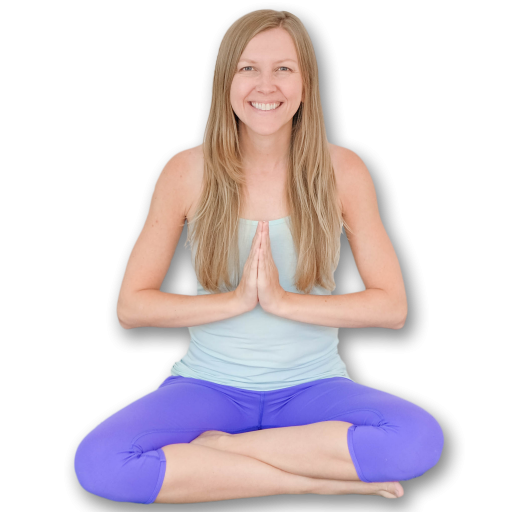Wanting to increase your flexibility is a wonderful goal to have. However, it does take time to see noticeable improvements, which can feel frustrating! It’s important to be patient and understanding with our bodies. Afterall, we can’t undo months or years (maybe even decades!) of tightness after a few stretches.
Here are three tips that can help you stay on track!
1. Focus on the Immediate Feeling
One of the best ways to stay motivated is to pay attention to how you feel right after you stretch. While increasing flexibility and range of motion takes time, you will often feel less tension in the area you were stretching immediately after.
Test it out with this neck stretch:

- Tilt your head to the left, bringing your left ear towards your shoulder.
- Relaxing your neck, use your left hand to apply light pressure, deepening the stretch down the right side of your neck.
- Hold for 30-60 seconds.
- Release and bring your head back to an upright position.
✨Notice and compare how the right side of your neck feels compared to the left (Pretty good right?!).✨
This reaffirms that even if you aren’t seeing major progress immediately, your effort IS making a difference. Now repeat this stretch on the other side.
Slowing down to stretch has mental benefits as well, such as feeling calmer and a sense of accomplishment for sticking to your routine!
Hold on to all of these feelings—they will help you stay consistent.
2. Remember That Improvement Isn’t Linear
Some days you’ll feel more open and flexible, while other days you might feel stiff and tight. This is completely normal! Your flexibility can be influenced by things like sleep, stress, hydration, and recent activity.
For example, while I can usually touch my toes, there are days when I can’t—at least not without several minutes of stretching. This usually happens the day after a long hike or bike ride, when my muscles are tighter than usual. Times like these just mean your body just needs a little extra time to loosen up.
Morning Stiffness
You may also notice feeling quite stiff in the morning, which is totally understandable. You’ve been lying motionless for hours! This is a good time to do some gentle movement, giving your body time to loosen up, rather than jumping into a holding stretch.
Small Improvements Add Up
It’s also easy to overlook the progress you’ve made because improvements happen gradually. You may not notice day-to-day changes, but over time, those small improvements add up. Taking note of how your body feels now compared to a month ago can be a great reminder that you are making progress, even if it doesn’t always feel that way.
3. Don’t Overwhelm Yourself—Build a Routine Gradually
One of the biggest mistakes you can make when starting out is doing too much too soon. Diving into an intense stretching routine is a sure fire way to end up feeling overwhelmed and stop altogether.
Consider changing your mindset from achieving a specific goal, such as being able to touch your toes, to creating a lifelong habit. After all, even if you do eventually get to the point where you can touch your toes, that doesn’t mean you can pack it in, never to stretch again! If you do, you will lose what you’ve worked so hard for!
Consistency is key!
Find a routine and frequency that is manageable for you. For example, while starting out by stretching for 5 minutes once a week may not have a major impact on increasing your flexibility, if you make it a regular part of your life, you can then add on when you are ready. It’s much better to have a simple routine you stick with than an intense one you abandon after a week.
Improving flexibility doesn’t have to be frustrating. By focusing on how good stretching feels in the moment, accepting that you’ll have some ups and downs and finding a routine that works for you, you’ll be able to make stretching a regular part of your life! Keep at it, and your flexibility is sure to improve!


